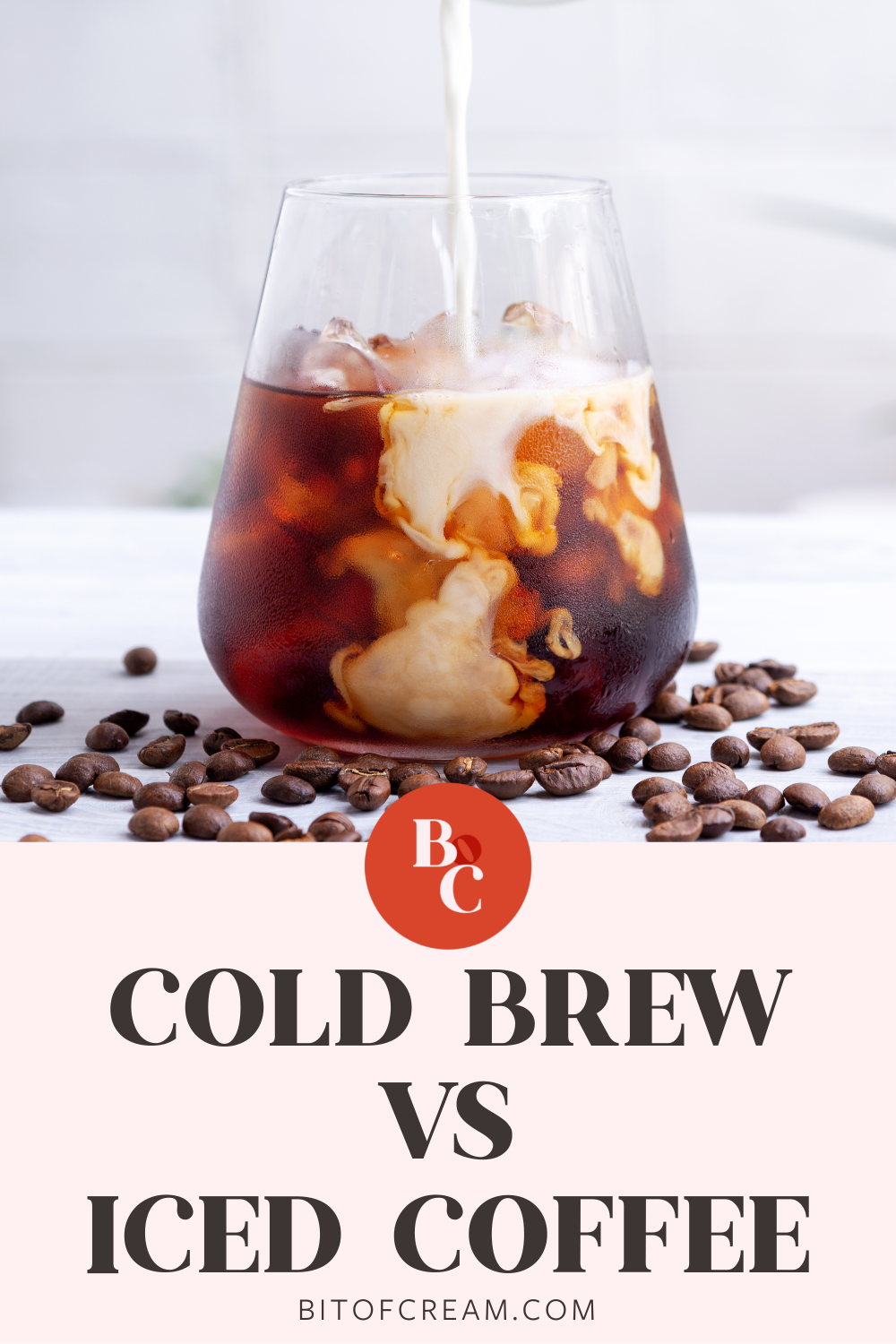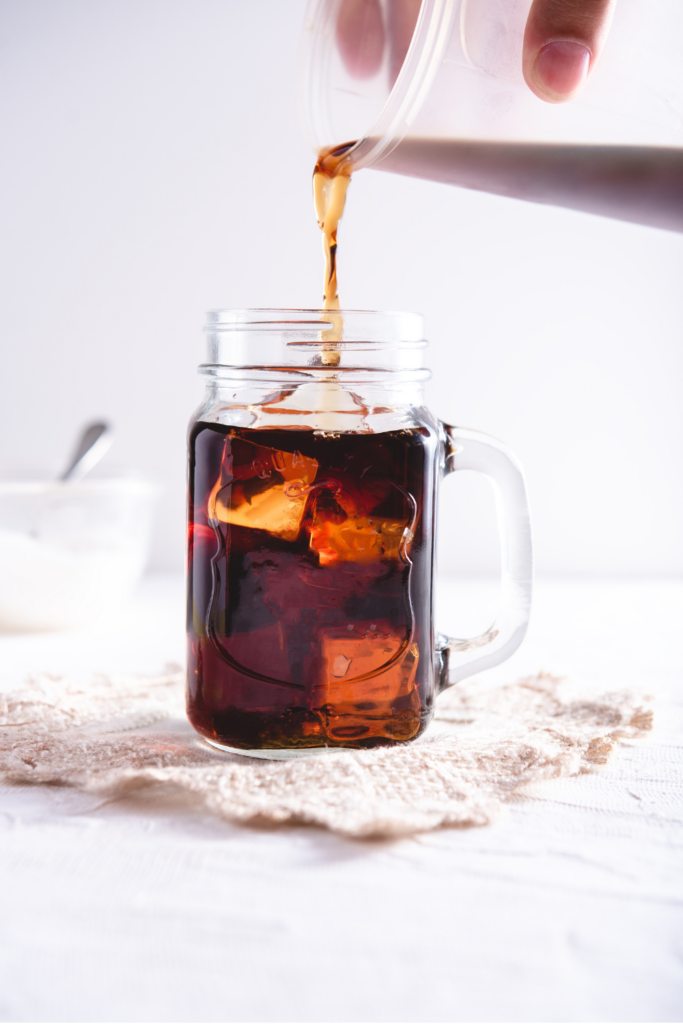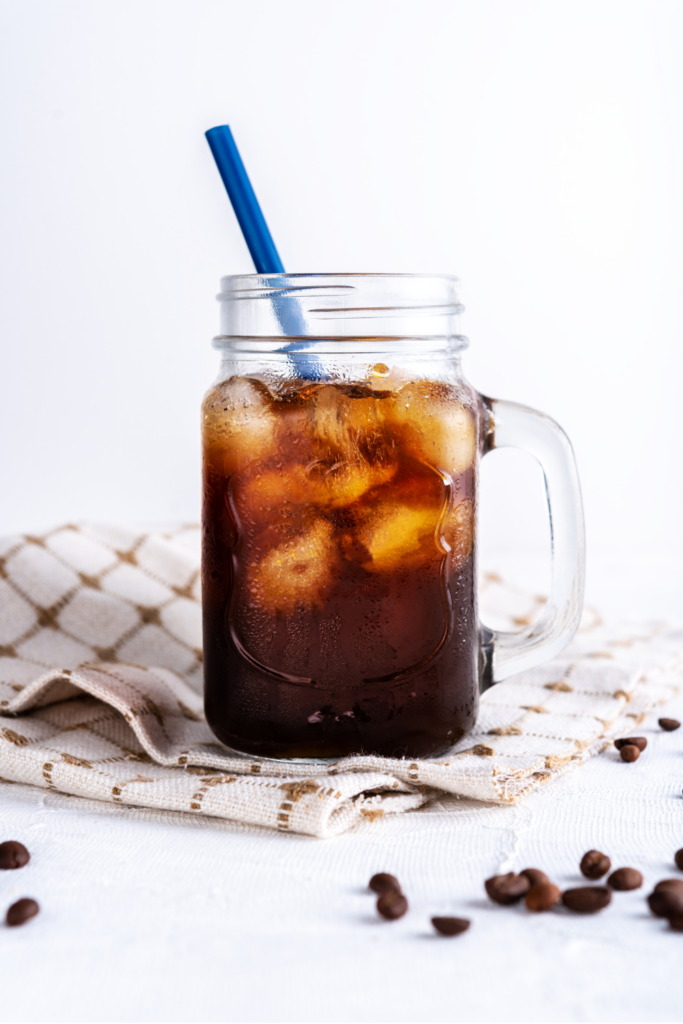Here’s the dilemma. You want coffee, but you don’t want it to be hot.
Cold Brew and Iced Coffee are great solutions for that. But which is better?
To be honest, it depends.
Do you like sweet or robust coffee? How much caffeine? And do you have time to prep it for tomorrow…or did you need it yesterday?
In this article, I’ll share a primer on both cool coffee drinks, explain what makes them unique, and provide a few critical tips when comparing Cold Brew vs Iced Coffee.

What is Cold Brew?
You may have noticed cold brew taking the coffee world by storm.
It’s on every coffee shop’s menu board, chain brewer’s commercials, and probably many of your friends’ coffee orders. But what exactly is it?
Cold brew is a method of making coffee without heating the grounds. Instead, coarse grinds are steeped in room temperature water for several hours. The result is less bitter and acidic than hot brewed coffee.
If you’ve ever made tea before, you’ll be able to make cold brew coffee since their processes are almost exactly the same.
What is Iced Coffee?

Iced coffee is simply hot brewed coffee that you cool down and serve over ice.
It’s a great way to get your caffeine fix when it’s hot outside. But let’s be honest, sometimes an iced coffee is still great in the dead of winter.
It’s prepared the same way you would make a cup of hot coffee. You can use a drip machine, pour-over, percolator, french press, or any other method.
Once it’s brewed, the hot coffee is chilled in a refrigerator and then served. Or sometimes it’s’ poured directly over ice and served immediately.
Since coffee brewed with heat tastes acidic, iced coffees are usually sweetened or flavored. Most often, they’re served with dairy.
If you need a caffeine fix, and you need it now, there are also some options to mix iced coffee from concentrate. Several pre-packaged iced coffee drinks are also available at most stores and gas stations.
Differences between Cold Brew and Iced Coffee

Taste
Aside from the brewing method, the most noticeable difference between cold brew and iced coffee is taste.
Even if you don’t like black coffee, you might enjoy a black cold brew coffee.
This is because it uses coarse ground coffee steeped in room temperature water, the resulting coffee is less acidic. It has a smooth, naturally sweet taste.
And none of the bold, bitter, and robust flavors that tend to put people off of black coffee.
Because it’s brewed like hot coffee, iced coffee will taste the same as a black cup of coffee. Only cold.
Compared with cold brew, it’s more full-bodied and rich. It also offers a delightful bitterness that targets and alights the taste buds toward the back of the tongue.
Appearance
With cold brew, there is no ice and therefore no dilution. The drink appears dark and opaque in color.
Iced coffee will have a translucent quality from the additional water created by the ice melting. As a result, it’ll appear more golden brown than cold brew’s deep dark color.
Caffeine
More caffeine is extracted from hot brewing compared with the cold brew process. At the same time, ice melt makes an iced coffee less concentrated.
A cup of hot coffee will have more caffeine than an equal-sized cold brew coffee. But a cold brew coffee will have more caffeine than an iced coffee.
And if you’re curious about nitro cold brew, check out our expert coffee guide here..
Quantity
Typically, both types of coffee are prepared in large batches. Serve and enjoy whatever size coffee you’re craving. Just be careful with how many servings you take!
Both of these beverages are very drinkable and lend themselves to sneaky over-caffeination.
How To Make Cold Brew
Add water to your vessel.
A French press is an excellent tool for cold brew since there’s a built-in filter. However, you can make cold brew in a mason jar almost as quickly. Any container that holds liquid can work.
Incorporate coffee grinds.
Add coffee grounds directly to the water, stirring once to ensure equal saturation. Then, let the mixture sit and steep at room temperature for a day.
Follow the ratio of 1:8 parts coarse ground coffee to water for a perfectly sippable cold brew in 24 hours. That means you’ll need 1g of coffee for every 8g of water.
If you want to make a liter to keep in the fridge, you’ll need around 125g of coffee.
Strain out the grinds.
Once the cold brew has steeped, you’ll need to remove the coffee grinds.
Using a french press makes this step super easy. While it’s also possible to use a plain pitcher or jug, you’ll need to pour it through a fine mesh strainer lined with a coffee filter.
Chill the coffee.
Once the cold brew is steeped and strained, all that’s left to do is chill it in the fridge.
Serve.
You can serve cold brew in a glass without ice, but feel free to add ice, sweetener, flavors, or dairy to your preference.
How To Make Iced Coffee
Brew the coffee.
Start by brewing coffee using your normal method. A drip machine, pour-over, percolator, or french press will work fine. Just be sure to your water is hot and the grind size is set correctly.
Adjust the coffee-to-water ratio if you’re looking for extra-strong iced coffee. Adding extra ground coffee will enable the drink to uphold its flavor even while the ice is melting and diluting it.
Sweeten or flavor.
If you’re using granulated sugar or another type of sweetener that requires melting, add it to the coffee while it’s still hot. This way, you’ll avoid any extra graininess or bitterness.
If you opt for liquid syrups or other flavorings for your coffee, you could always add those in as you’re assembling your cup.
Chill.
If you have the time, transfer your coffee to a storable container or pitcher, and chill it in the fridge for at least ½ hour or so before serving. This step will keep the ice from melting immediately and ensure you can enjoy ice-cold coffee to the very last sip.
Serve over ice.
Fill a cup with ice and pour your chilled coffee over the top. Add dairy to create a classic, creamy, balanced drink. It’s perfect for the hotter months or whenever you want!
FAQ
A fantastic hack I’ve learned is to make coffee ice cubes with leftover coffee throughout the week. Brew a pot of coffee and only drink ½ the pot? Pour the leftovers into an iced cube tray. The next time you’re craving iced coffee, you’ll have the perfect solution to cool it down without diluting it.
It is possible to use cold water when preparing cold brew, but the extraction time will be longer. And, if you remove the grinds too early, the results won’t be bold and robust. Try using room temperature water instead. It’s the best way to make cold brew in a reasonable amount of time and still get smooth and delicious coffee.
A medium or dark roast compliments the cold brewing method perfectly. You’ll enjoy a robust, nutty, chocolatey, and rich cup every time.
Medium or blonde roasts highlight the iced coffee’s lighter and easily sippable nature. The flavors are more fruity, can handle higher acidity, and combat overtly bitter notes.
Recap
In spite of their similar presentation, cold brew and iced coffee are very different drinks.
Which one should you get?
Try iced coffee if you need your caffeine asap. You can prepare it very quickly.
Just remember to keep milk and a sweetener on hand to cut down on some of the natural acidity and bitterness that comes from the hot brewing method.
If you’re looking for a drink that is less bitter and acidic, try cold brew instead.
While you can still and dairy and flavoring, the drink is naturally sweeter and may not need it. The downside is that cold coffee extraction takes time, so you’ll want to brew it in advance.
Looking for more coffee fun? Check out one of these coffee guides!

Thanks again.